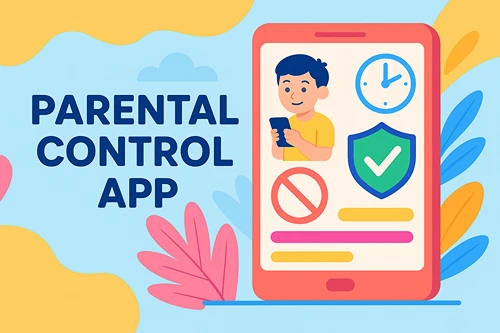Balancing Act: How Parents Can Foster Healthy Online and Offline Lives for Kids
Technology is woven into nearly every aspect of our lives, from education to entertainment to social interactions. For children growing up in the digital age, the internet is a natural part of their environment. While technology offers many benefits, including access to information, learning opportunities, and connectivity, excessive screen time can pose significant health risks.
As parents, it’s essential to balance allowing children to engage with technology and encouraging them to participate in offline activities that promote physical, emotional, and social well-being. Here’s how parents can foster a healthy balance between online and offline lives for their kids.
Understanding the Health Risks of Too Much Screen Time
Before diving into strategies for balancing online and offline activities, it’s important to understand the potential health risks associated with excessive screen time. Spending too much time in front of screens can lead to a range of physical and mental health issues in children, including:
- Eye Strain and Vision Problems: Prolonged screen use can cause digital eye strain, leading to headaches, blurred vision, and dry eyes. Over time, excessive screen time may also contribute to nearsightedness (myopia).
- Sleep Disturbances: Screen exposure, particularly before bedtime, can interfere with sleep patterns. The blue light emitted by screens can disrupt the production of melatonin, a hormone that regulates sleep, making it harder for children to fall asleep and stay asleep.
- Physical Inactivity: Spending too much time online often means less time for physical activity. This can contribute to obesity, poor posture, and a lack of physical fitness.
- Mental Health Issues: Excessive screen time, especially on social media, can increase the risk of anxiety, depression, and feelings of isolation. The constant comparison to others and exposure to cyberbullying can negatively impact a child’s self-esteem and mental well-being.
Given these potential risks, it’s crucial for parents to take proactive steps to create a balanced lifestyle for their children.
Promoting Physical Activity
One of the most effective ways to counteract the negative effects of excessive screen time is by encouraging regular physical activity. Physical exercise is critical for a child’s overall health, helping to build strong muscles and bones, improve cardiovascular fitness, and maintain a healthy weight. Additionally, physical activity boosts mood, reduces stress, and improves cognitive function.
To promote physical activity, parents can:
- Set Daily Exercise Goals: Encourage your child to engage in at least 60 minutes of physical activity each day. This could include activities such as playing sports, riding a bike, dancing, or even taking a walk as a family.
- Incorporate Active Play into Daily Routines: Make physical activity a natural part of your child’s day. For example, you could schedule regular playtime at the park, take the stairs instead of the elevator, or organize family outings that involve physical activity, such as hiking or swimming.
- Limit Sedentary Screen Time: Set clear limits on how much your child spends on sedentary activities like watching TV or playing video games. Encourage breaks during screen time to stand up, stretch, or move around.
Encouraging Face-to-Face Social Interactions
While online interactions can be valuable, especially in maintaining connections with friends and family, face-to-face social interactions are crucial for a child’s social development. In-person interactions help children develop communication skills, empathy, and the ability to read social cues. These skills are vital for building strong relationships and navigating social situations.
To encourage face-to-face social interactions, parents can:
- Arrange Playdates and Social Activities: Organize regular playdates, group activities, or outings with friends and family. Encourage your child to participate in team sports, clubs, or other group activities that foster social interaction.
- Model Positive Social Behavior: Children learn by observing their parents. Make an effort to model positive social behavior by engaging in face-to-face conversations, showing interest in others, and demonstrating good listening skills.
- Create Family Time: Prioritize family time without screens. This could include family meals, game nights, or simply spending time together talking about the day. These interactions strengthen family bonds and provide opportunities for meaningful conversations.
Fostering Offline Hobbies and Interests
In addition to physical activity and social interactions, it’s important to encourage children to develop hobbies and interests that don’t involve screens. Offline activities provide a valuable counterbalance to screen time and allow children to explore their creativity, build new skills, and discover their passions.
To foster offline hobbies and interests, parents can:
- Introduce a Variety of Activities: Expose your child to a range of activities, such as reading, drawing, music, crafts, cooking, or gardening. Encourage them to explore different interests and find activities they enjoy.
- Support Pursuits of Passion: Once your child shows interest in a particular hobby, provide the necessary resources and support to help them pursue it. This might include enrolling them in classes, providing materials, or simply offering encouragement.
- Designate Screen-Free Zones and Times: Establish specific times and areas of the home where screens are not allowed. This could include during meals, in bedrooms, or before bedtime. Use these screen-free times to engage in offline activities together as a family.
Implementing Digital Detox Days
Consider implementing regular digital detox days to help reset screen habits and encourage offline activities. On these days, the entire family can take a break from screens and focus on spending time together, engaging in outdoor activities, or simply relaxing without the distraction of technology.
Digital detox days can help children (and parents) reconnect with the world around them, reduce screen dependency, and cultivate a healthier relationship with technology. These breaks can also highlight the importance of balancing online and offline time in everyday life.
Being a Positive Role Model for Screen Use
Children often mimic the behavior of their parents, so it’s important to set a good example when it comes to screen use. Demonstrating healthy digital habits yourself can encourage your child to follow suit.
To be a positive role model for screen use, parents can:
- Practice Mindful Screen Use: Be conscious of how much time you spend on screens and what you’re using them for. Prioritize meaningful interactions and offline activities over passive screen time.
- Set Boundaries for Yourself: Just as you set limits for your child’s screen time, establish boundaries for your own use. For example, avoid using screens during family meals or when spending quality time with your children.
- Communicate the Importance of Balance: Talk to your children about the importance of balancing online and offline activities. Explain the reasons behind the limits and routines you set and involve them in creating a balanced lifestyle that works for the whole family.
Navigating Parenting in the Digital Age
Striking a balance between online and offline activities is essential for the health and well-being of children. By promoting physical activity, encouraging face-to-face social interactions, fostering offline hobbies, and setting a positive example for screen use, parents can help their children develop a healthy relationship with technology. With mindful practices and proactive planning, it’s possible to raise well-rounded children who thrive both online and offline.





